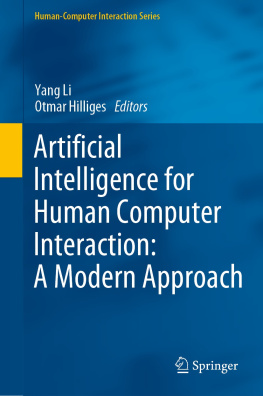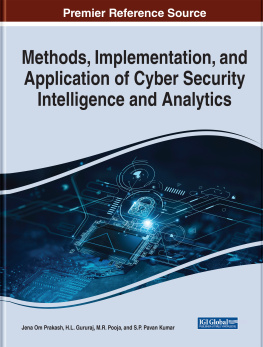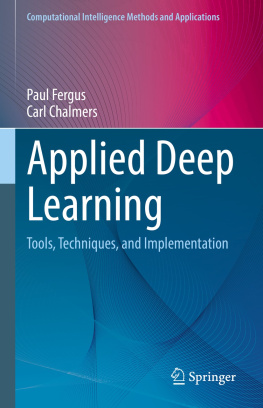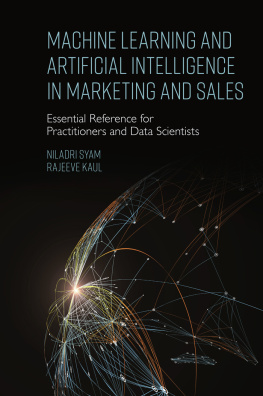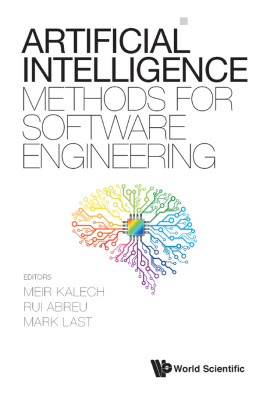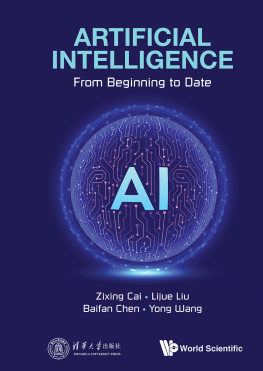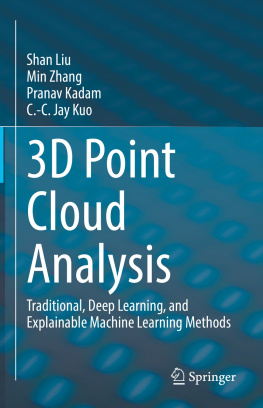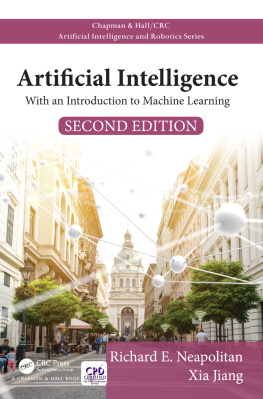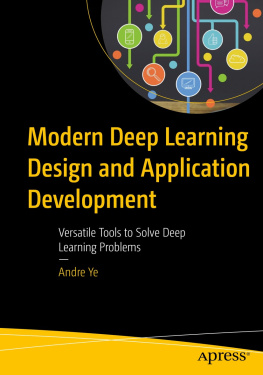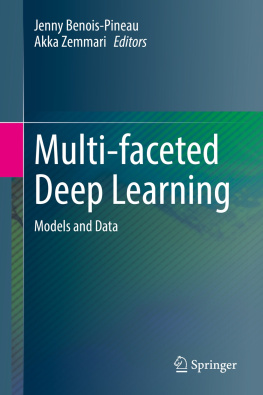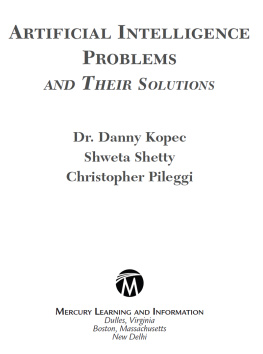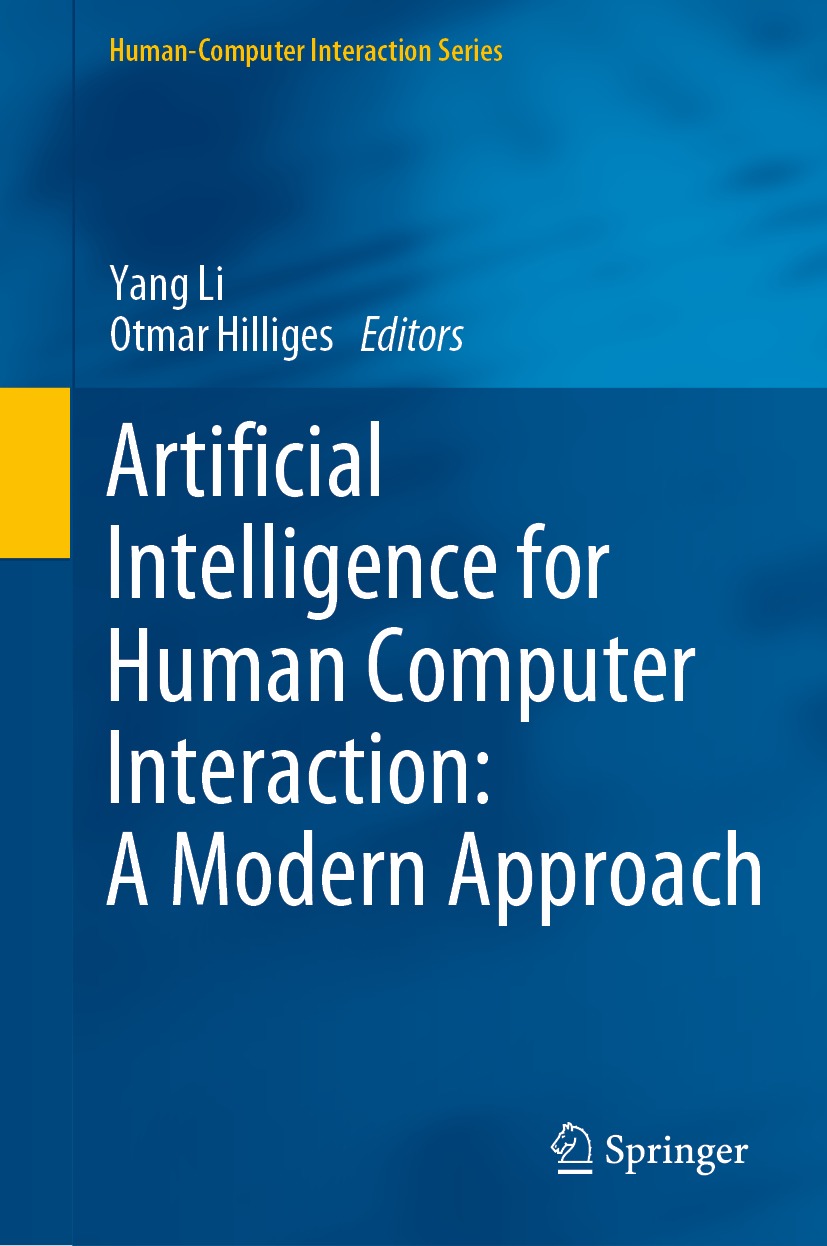HumanComputer Interaction Series
Editor-in-Chief
Jean Vanderdonckt
Louvain School of Management, Universit catholique de Louvain, Louvain-La-Neuve, Belgium
The HumanComputer Interaction Series, launched in 2004, publishes books that advance the science and technology of developing systems which are effective and satisfying for people in a wide variety of contexts. Titles focus on theoretical perspectives (such as formal approaches drawn from a variety of behavioural sciences), practical approaches (such as techniques for effectively integrating user needs in system development), and social issues (such as the determinants of utility, usability and acceptability).
HCI is a multidisciplinary field and focuses on the human aspects in the development of computer technology. As technology becomes increasingly more pervasive the need to take a human-centred approach in the design and development of computer-based systems becomes ever more important.
Titles published within the HumanComputer Interaction Series are included in Thomson Reuters' Book Citation Index, The DBLP Computer Science Bibliography and The HCI Bibliography.
More information about this series at https://link.springer.com/bookseries/6033
Editors
Yang Li and Otmar Hilliges
Artificial Intelligence for Human Computer Interaction: A Modern Approach
1st ed. 2021

Logo of the publisher
Editors
Yang Li
GoogleResearch (United States), Mountain View, CA, USA
Otmar Hilliges
Advanced Interactive Technologies Lab, ETH Zurich, Zurich, Switzerland
ISSN 1571-5035 e-ISSN 2524-4477
HumanComputer Interaction Series
ISBN 978-3-030-82680-2 e-ISBN 978-3-030-82681-9
https://doi.org/10.1007/978-3-030-82681-9
The Editor(s) (if applicable) and The Author(s), under exclusive license to Springer Nature Switzerland AG 2021
This work is subject to copyright. All rights are solely and exclusively licensed by the Publisher, whether the whole or part of the material is concerned, specifically the rights of translation, reprinting, reuse of illustrations, recitation, broadcasting, reproduction on microfilms or in any other physical way, and transmission or information storage and retrieval, electronic adaptation, computer software, or by similar or dissimilar methodology now known or hereafter developed.
The use of general descriptive names, registered names, trademarks, service marks, etc. in this publication does not imply, even in the absence of a specific statement, that such names are exempt from the relevant protective laws and regulations and therefore free for general use.
The publisher, the authors and the editors are safe to assume that the advice and information in this book are believed to be true and accurate at the date of publication. Neither the publisher nor the authors or the editors give a warranty, expressed or implied, with respect to the material contained herein or for any errors or omissions that may have been made. The publisher remains neutral with regard to jurisdictional claims in published maps and institutional affiliations.
This Springer imprint is published by the registered company Springer Nature Switzerland AG
The registered company address is: Gewerbestrasse 11, 6330 Cham, Switzerland
Forward for Artificial Intelligence for Human Computer Interaction: A Modern Approach
From its earliest days, Artificial Intelligence has pursued two goals: to emulate human behavior, and to achieve optimal performance regardless of method. On one side, researchers argue that humans are the best example we have of intelligent systems, so AI should focus on understanding and replicating the human mind and brain. On the other side, researchers contend that selecting a good course of action is an optimization problem, so AI should focus on mathematical equations and algorithms that achieve or approximate optimality.
This book focuses on a middle ground that brings together these two approaches:
AI should be seen as a tool that allows humans and computers to work better together.
Sometimes this means a high level of automation, but a human should still have a high level of overall control and confidence in the system.
Other times a human is immersed in the inner loop and effective human/computer dialog is crucial to success.
Understanding human intent and mental state is a precondition of effective dialog, as is the ability for a computer to explain itself in terms a human can understand.
Prior to any optimization, human and computer need to come to an agreement on exactly what it is that should be optimized.
In recent years we have seen the rise of powerful new AI-enabled applications in computer vision, speech recognition, natural language understanding, recommendation systems, robotics, and other subfields. Getting the full benefit from these systems requires joint HCI/AI research.
For example, hundreds of millions of people use voice assistants regularly. Breakthroughs in deep learning AI made the recognition rate acceptable, and it is HCI that makes the whole interface work. But many challenges remain:
HCI research gave us the WIMP interface for devices with screens, but some voice assistants have no screen. They will need a new design language. This will require a partnership with AI providing ever-increasing capabilitiesbetter speech recognition, better models of user intent, more actions that the assistant can performand HCI answering how do we give users mental models that will allow them to discover and understand the ever-increasing capabilities.
Voice assistants could grow as a platform to become as significant as the PC or mobile platforms, but only if it is easy for developers to create applications that take advantage of the power of AI with a convenient user interface. Today, many voice assistant applications are little better than the annoying phone services that say "press 1 for " because that is the easiest methodology for developers who are unskilled in machine learning to express the options. The full promise of AI will only be achieved if the ability to easily develop powerful innovative systems is democratized, not restricted to only PhD-level researchers.
In traditional software, UX designers come up with guidelines that are implemented by human programmers. But what happens when the "programmer" is a machine learning system? How can UX guidelines be codified as inputs to a system that is continually learning and evolving, and doing personalization for each user?
As AI moves from the research labs to real-world applications, we are finding that some applications can unfairly disadvantage one subgroup of users over another, due to disparities in data or to carelessness in setting the goals of the system. To achieve fairness while maintaining privacy and efficacy will require HCI tools that allow us to explore the data more thoroughly.
Of course there are many other AI applications besides voice assistants that will also benefit from a partnership with HCI: autonomous vehicles, computer vision, robots, recommendation systems, healthcare, drug discovery, elder care, and so on. Each specialized application will require in-depth understanding of the use cases for each distinct user population.

